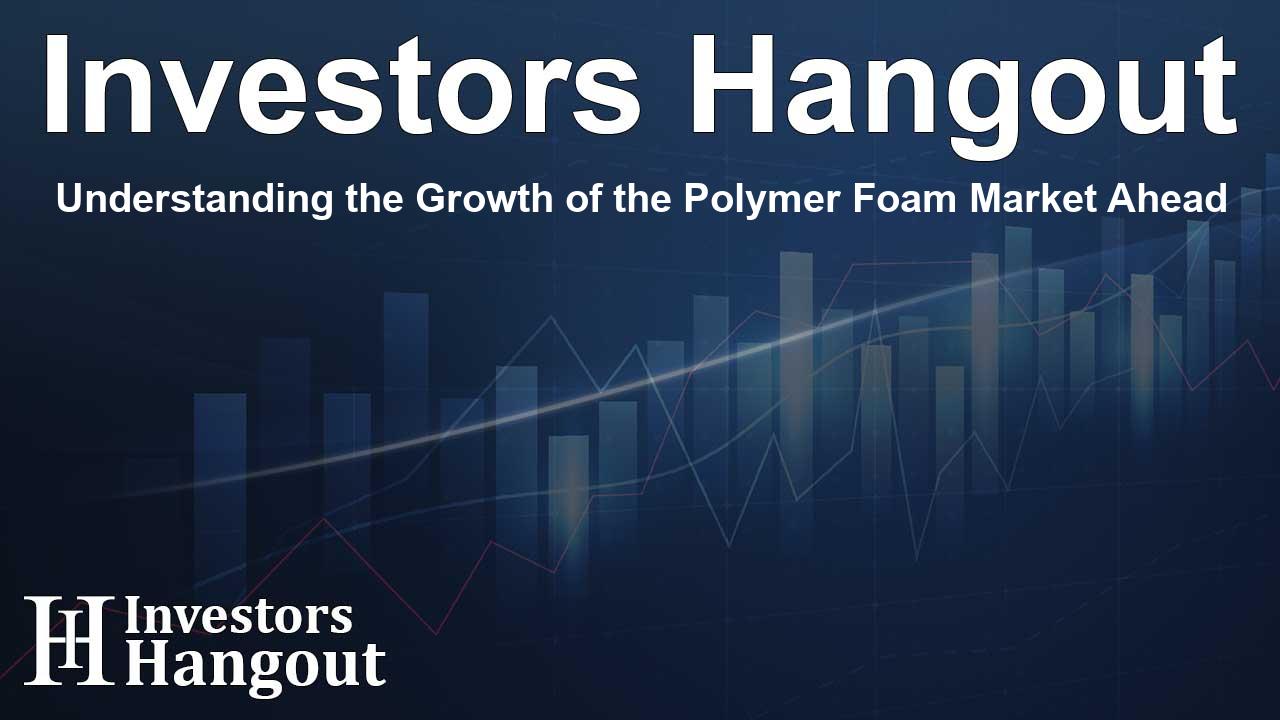Understanding the Growth of the Polymer Foam Market Ahead

Expanding Perspectives on the Polymer Foam Market
Polymer foam represents a cutting-edge material made by trapping gas bubbles within a solid or liquid polymer matrix, forming a structure that is both lightweight and strong. Industries are increasingly drawn to this versatile material for its insulation, cushioning, and structural applications. Markets such as automotive, construction, packaging, and furniture heavily rely on polymer foams, with common varieties including polyurethane (PU), polystyrene (PS), polyvinyl chloride (PVC), and polyethylene (PE) foams.
Market Growth and Key Applications
The polymer foam market is set to witness remarkable growth, projected at a compound annual growth rate (CAGR) of 5.4% from 2024 to 2031. This growth is anticipated to propel the market's value from USD 135 billion in 2024 to approximately USD 195 billion by 2031. The increasing demand for lightweight materials, especially in the automotive and construction sectors, significantly boosts this market. Automotive manufacturers are incorporating polymer foams to enhance fuel efficiency while ensuring durability and performance.
Driving Factors Behind Demand
The demand for polymer foams is largely driven by industries looking to optimize material usage without compromising strength. In construction, polymer foams provide excellent insulation, essential for energy-efficient buildings. The automotive industry benefits from polymer foams in various components to reduce overall vehicle weight, aligning with eco-friendly initiatives and emission mandates. Furthermore, the healthcare sector is leveraging polymer foam properties in medical devices, cushioning, and protective equipment.
Challenges and Innovations in Sustainability
While the polymer foam market flourishes, it faces challenges regarding environmental sustainability and fluctuating raw material prices. The push towards greener alternatives has led to innovations in bio-based and recyclable foams. Many leading companies are investing in sustainable practices, producing eco-friendly alternatives that remain effective while minimizing environmental impacts.
Industry Leaders and Competitive Landscape
Key players in this robust market include BASF SE, Dow Inc., Huntsman Corporation, JSP Corporation, Borealis AG, Zotefoams Plc, Sealed Air Corporation, and Armacell International, among others. The competitive landscape hints at a shift towards consolidation as companies strive for improved pricing strategies and volume profits. Enhanced market presence through mergers and acquisitions positions them to meet increasing demand with innovative, sustainable products.
Regional Insights: A Focus on Asia-Pacific
The Asia-Pacific region is poised to dominate the polymer foam market, spurred by rapid industrialization and urbanization. Countries like China and India are experiencing surging demands for automotive components and electronics, directly influencing polymer foam consumption. As local manufacturing capabilities grow, companies in these markets are positioned to offer low-cost, competitive products, even exporting to Europe and North America.
Technological Advancements Shaping the Future
Recent technological advancements have opened doors for polymer foam applications in specialized fields. For instance, innovations enable their use in high-performance sectors like aerospace and electronics, where lightweight materials with superior mechanical properties are essential. The rise of nanotechnology is also improving the strength and thermal efficiency of these foams, making them suitable for complex environments.
Emerging Applications and Market Prospects
The future landscape of the polymer foam market holds promising prospects as new applications emerge. Bio-based and alternative foams are gaining traction in the market amidst rising environmental concerns. These innovations not only provide alternatives to traditional petroleum-based foams but also align with the growing consumer and industrial shift toward sustainability.
Frequently Asked Questions
1. What is the projected growth rate of the polymer foam market?
The polymer foam market is expected to grow at a CAGR of 5.4% from 2024 to 2031.
2. What industries primarily utilize polymer foams?
Polymer foams are primarily utilized in automotive, construction, packaging, and furniture industries.
3. How do bio-based foams contribute to market growth?
Bio-based foams are gaining popularity due to their reduced environmental impact and alignment with sustainability initiatives, driving market expansion.
4. Which regions are leading in polymer foam consumption?
The Asia-Pacific region is leading in polymer foam consumption, particularly in automotive components and electronics.
5. What are some challenges faced by the polymer foam market?
The market faces challenges related to environmental regulations and fluctuating raw material prices, prompting a push for sustainable solutions.
About Investors Hangout
Investors Hangout is a leading online stock forum for financial discussion and learning, offering a wide range of free tools and resources. It draws in traders of all levels, who exchange market knowledge, investigate trading tactics, and keep an eye on industry developments in real time. Featuring financial articles, stock message boards, quotes, charts, company profiles, and live news updates. Through cooperative learning and a wealth of informational resources, it helps users from novices creating their first portfolios to experts honing their techniques. Join Investors Hangout today: https://investorshangout.com/
Disclaimer: The content of this article is solely for general informational purposes only; it does not represent legal, financial, or investment advice. Investors Hangout does not offer financial advice; the author is not a licensed financial advisor. Consult a qualified advisor before making any financial or investment decisions based on this article. The author's interpretation of publicly available data shapes the opinions presented here; as a result, they should not be taken as advice to purchase, sell, or hold any securities mentioned or any other investments. The author does not guarantee the accuracy, completeness, or timeliness of any material, providing it "as is." Information and market conditions may change; past performance is not indicative of future outcomes. If any of the material offered here is inaccurate, please contact us for corrections.